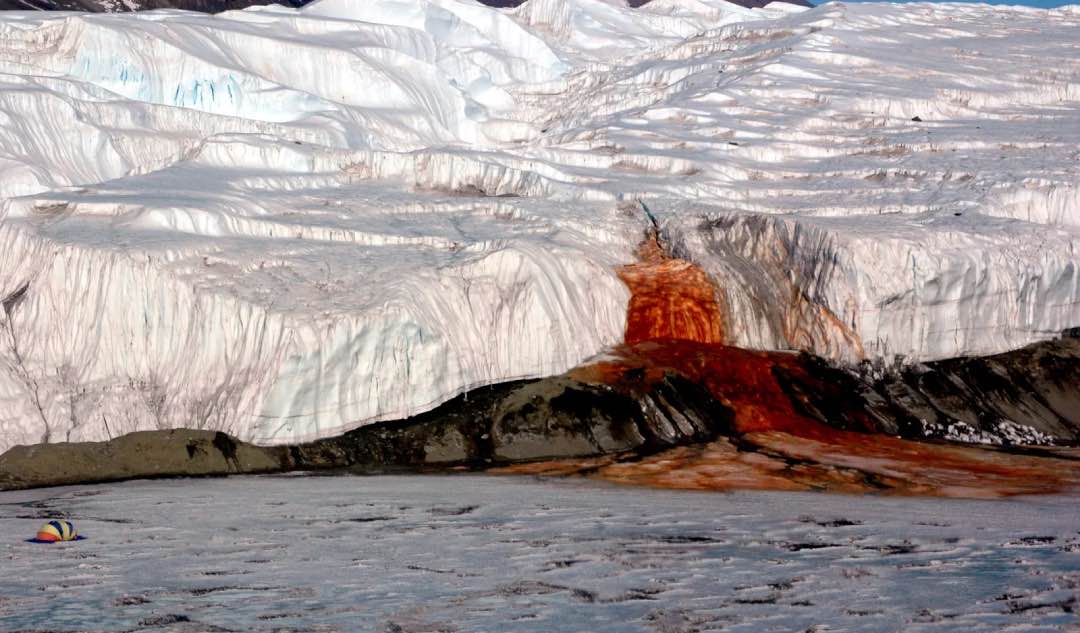When you think of Antarctica, you think of mountains and glaciers covered in ice. You might think about some clear blue and freezing cold water. What you’re probably not thinking about is a bright red waterfall that looks like blood. However, this is exactly what Antarctica’s Blood Falls are! Keep on reading and discover how this happens!
What are Antarctica’s Blood Falls?
Antarctica is mostly covered in white snow and ice. However, this is not all there is to it. Every Once in a while, there are these bright red waterfalls in the Taylor Glaciers, that make it look like the ice is losing blood. For many years, scientists believed it to be red algae that tainted the water red. However, this is not the case. It would be iron-rich water that has a red color, making the waterfall look like something gruesome. The Iron in the water will have a reaction to the air when it first comes out of the glacier which makes it turn red. These “crimson-falls” were first discovered by geographer Thomas Griffith Taylor, and named both the glacier and the valley after himself.

All Glaciers are made from freshwater, however the bloodfalls are saltwater-based. This is confusing as the source of the water is found 300 meters underneath the ice. Scientists linked it to ancient flooding of seawater that flooded the valleys before the Glaciers were formed. They don’t know how much of the saltwater is beneath the ice or at what time the flooding happened.
A study shows that the water is still liquid!
In 2017, a study found that the saltwater reservoir is still liquid, despite being surrounded by frozen water that has been below-freezing temperatures steadily over the years. This makes the Taylor Glacier, the coldest glacier in the world with continuously flowing water!
